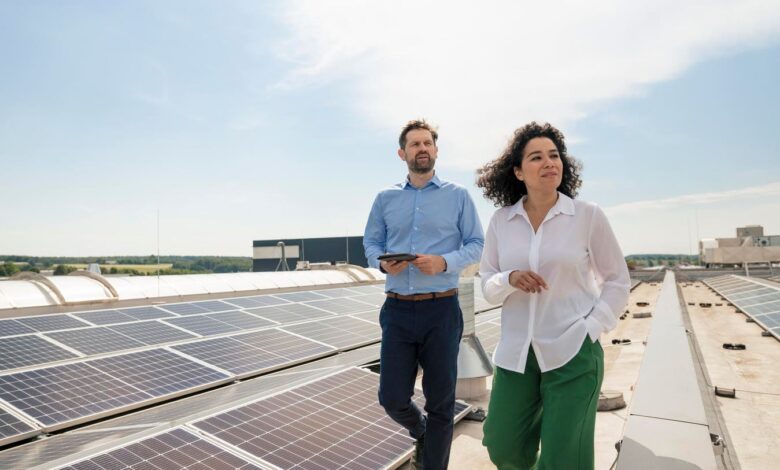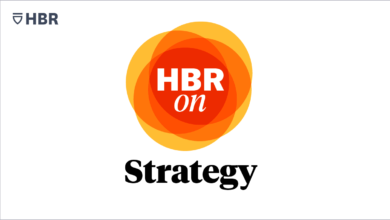The Circular Economy Beyond COP 28: Moving From Plans To Action

Carmen Ene is the CEO of BNP Paribas 3 Step IT, one of Europe’s leading circular technology management providers.
The world is drowning in waste. In the U.S., food waste is estimated at up to 40% of the supply. The EU generates 12.6 million tons of textile waste per year, and international e-waste is expected to reach 74 million tonnes by 2030—equivalent to around 200 Empire State Buildings—with dire consequences for the planet and all living beings.
However, waste is far from being just an environmental emergency. It’s a socioeconomic one, too.
The World Health Organization (WHO) recently stated that between 2.9 and 12.9 million women who work in the informal waste sector are potentially exposing themselves and their unborn children to toxic residue. And, if we look at e-waste, only less than 20% of it is collected and recycled, with a loss of up to $57 billion worth of raw materials.
It’s therefore not surprising that the circular economy—a system designed to minimize waste by keeping existing materials in circulation—is emerging as a tantalizing opportunity to tackle multiple socioeconomic and environmental issues simultaneously.
However, the greater question is whether a global system built for centuries on the principles of “take, make and waste” can truly transform into a circular, resource-efficient one.
Spotlight On Europe
Over the last decade, the EU has been a leading force in advancing the circular economy worldwide, and its focus on circularity is driven by the synergy of benefits it can offer.
Yet, with virtually all countries grappling to secure supplies of raw materials, find meaningful work for their populations, prevent the devastating impacts of global warming and keep their economies going, Europe is not alone on its circularity journey. In September, the EU commissioner for Environment, Oceans and Fisheries, Virginijus Sinkevičius, visited China to renew the commitment to a cooperation road map on a circular economy, expected to be rolled out in 2024. Other countries, such as The United Arab Emirates (UAE) and the U.S., are also advancing their circularity agenda
A Balancing Act
The increasing global emphasis on circularity is positive, and it offers an example of the systemic change needed to establish a worldwide route toward a just and sustainable future.
However, the transition is still very much in its infancy. Even in the EU, where circular economy adoption is very advanced, “more than 87 percent of … resource consumption still comes from primary materials,” according to the World Bank. It’s also apparent that circularity alone is not enough. Broader systemic changes are needed to establish a cohesive, worldwide route toward a just and sustainable future.
At the 28th Conference of the Parties to the UN Framework Convention on Climate Change (COP28), negotiations were long and politically complex, but they were also fruitful, reaching a momentous agreement that signals the “beginning of the end of the fossil fuel era.” The deal also laid the ground “for a swift, just and equitable transition, underpinned by deep emissions cuts and scaled-up finance.”
Notably, for the first time, the circular economy was included in the negotiated outcomes text, which explicitly mentioned circular approaches as part of the system change needed to address climate change.
A Blueprint For Change
With COP28 and the first-ever global stocktake behind us (even though the world did not turn the page on climate change), it feels like we finally stand at the brink of a pivotal transformation with all nations recognizing the urgent need to accelerate global action.
When it comes to national and international frameworks and plans, the effectiveness of an agreement lies in its practical enforcement. Without solutions that make it practically and economically possible for citizens and businesses to play their part, ideas will remain empty promises.
That’s where the circular economy comes to the fore. While not a silver bullet, it offers a comprehensive framework to initiate meaningful progress by delivering tangible results like creating cost efficiencies for businesses, supporting the creation of up to 8 million new jobs, unlocking over $4.5 trillion of economic growth, improving the resilience of global supply chains and allowing us to fulfill people’s needs with only 70% of the materials we now extract and use.
Importantly, even though adoption is not yet widespread, solutions based on circular economy principles already exist in multiple sectors and are often easy and financially and operationally convenient to adopt.
From Talk To Action
To make progress on the circular transition will require a knuckling down. Europe and the other circularly advanced economies will need to work together to create a level-playing field for circular business models to compete fairly with linear ones, enhancing competitiveness and encouraging widespread adoption.
A fair and effective global circular economy will depend on transparent and sustainable supply chains. This means businesses will need the policies and tools to make the right choices when it comes to their partnerships, investment, and impact, and governments will need to invest in the systems that allow products to be designed, sold, returned, repaired and remanufactured across borders.
Providers of circular solutions will need to dedicate time and effort to better communicate the commercial and operational benefits of these products. Circularity is not yet mainstream, after all, and marketing circular offerings requires leaders to focus on getting the message through that the advantages of circularity go beyond the environmental ones.
If we act now, by the time the next COP comes along, we won’t just have made significant progress on energy—starting to tackle the 55% of global emissions related to that sector—but we’ll have begun to finally confront the remaining 45%, which is linked to the way we make and consume products.
Crucially, we will have started building a world where assets are reused, waste is managed responsibly, circular solutions empower people across communities and economic prosperity goes together with environmental health. I believe this is the optimal path to a secure and thriving future.
Forbes Technology Council is an invitation-only community for world-class CIOs, CTOs and technology executives. Do I qualify?


